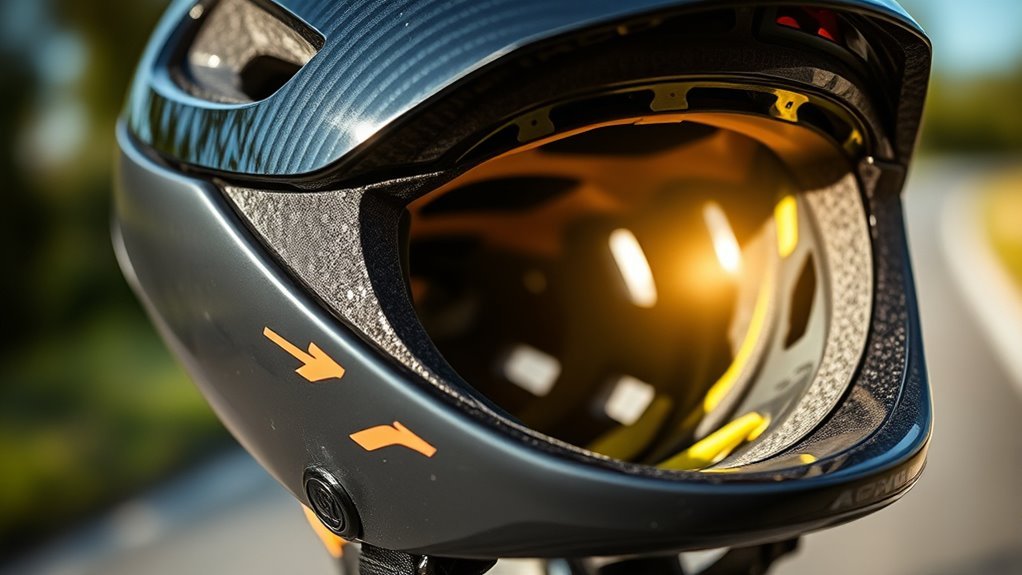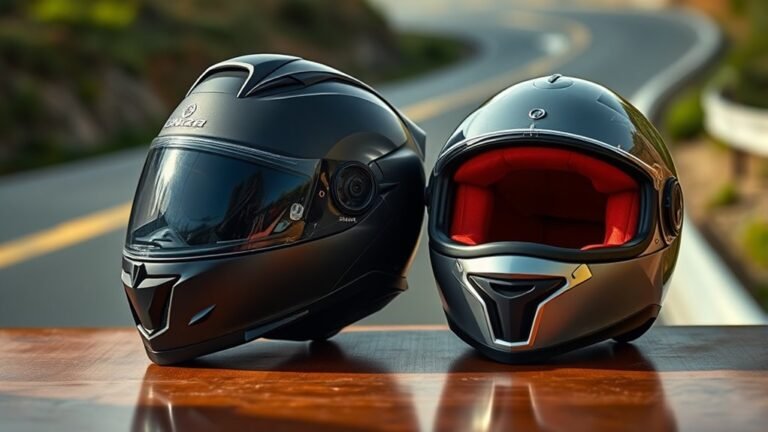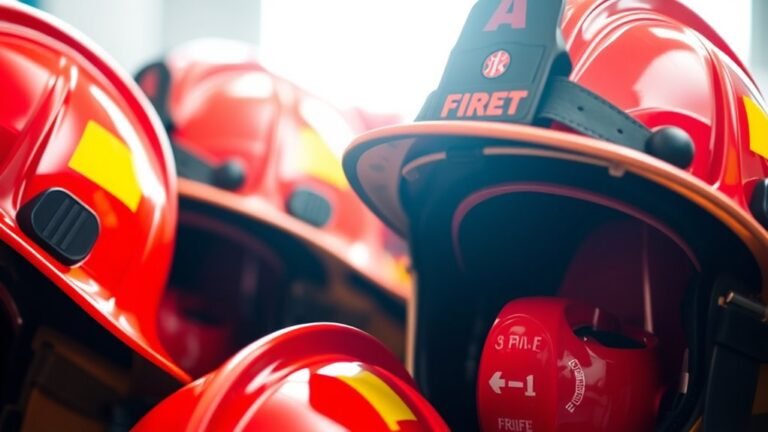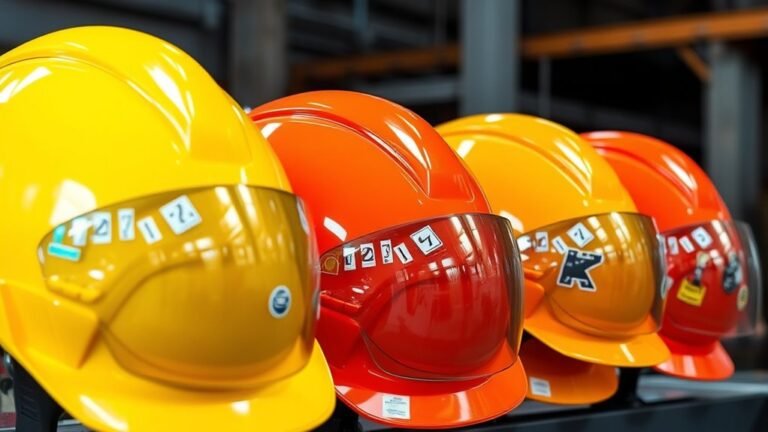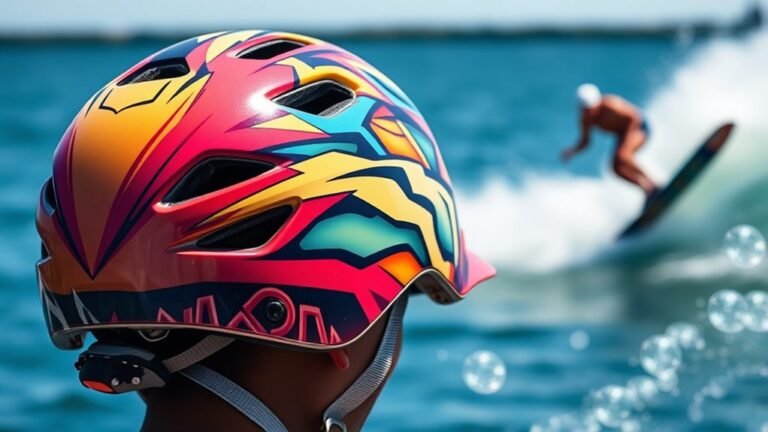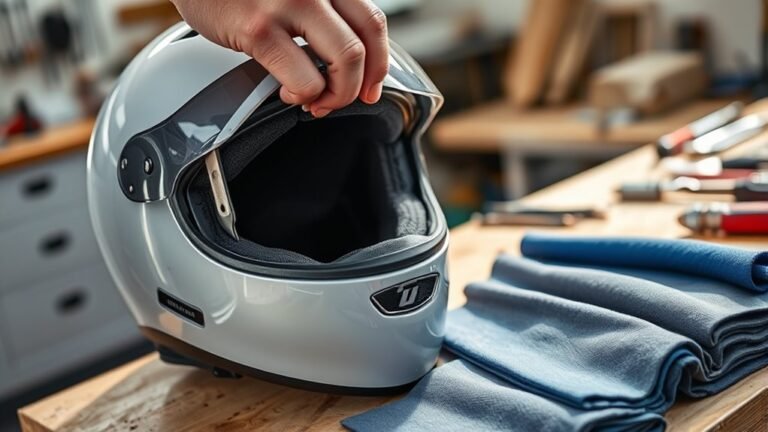The Role of MIPS Technology in Helmet Safety
MIPS technology plays an essential role in helmet safety by greatly reducing rotational forces during impacts. Its low-friction layer allows the outer shell to rotate independently, which lowers the risk of brain injuries from head twisting. Studies indicate that MIPS helmets can reduce concussion risk by up to 43% for cyclists and have led to fewer serious head injuries in various sports like football and skiing. There’s much more to explore about how MIPS enhances protection in your activities.
Understanding MIPS Technology and Its Mechanism
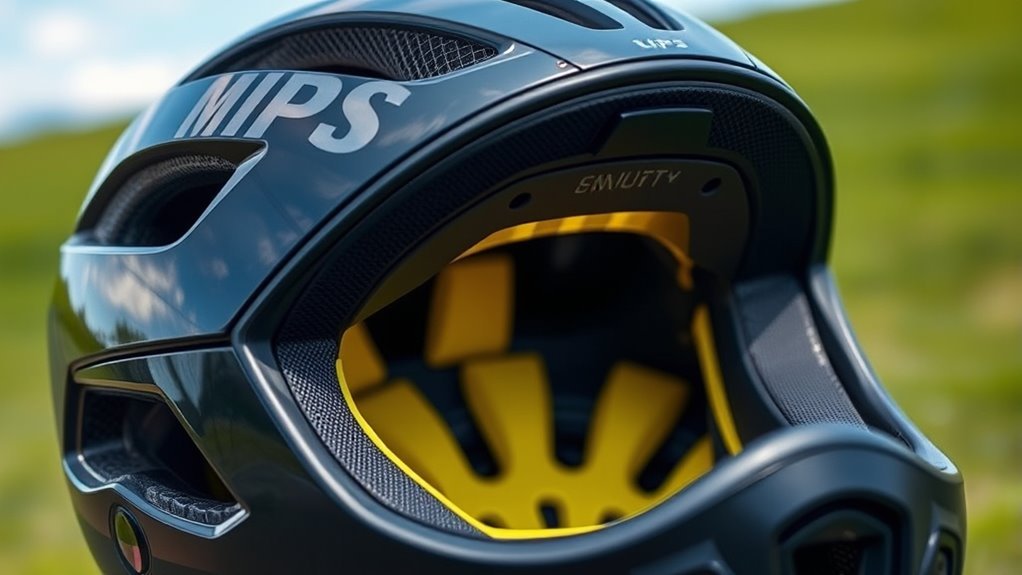
MIPS technology, or Multi-directional Impact Protection System, plays an essential role in enhancing helmet safety by addressing rotational forces during impacts. The MIPS mechanism consists of a low-friction layer inside the helmet that allows the outer shell to rotate independently upon impact. This design is vital because, in typical crashes, the head can experience rotational forces that traditional helmets don’t effectively mitigate. By accommodating these forces, MIPS aims to reduce the risk of brain injuries, which can occur when the brain twists inside the skull. Evidence suggests that helmets equipped with MIPS provide superior protection against certain types of impacts, making them a valuable choice for those who prioritize safety and freedom during activities like cycling or skiing.
Advantages of MIPS Over Traditional Helmet Designs
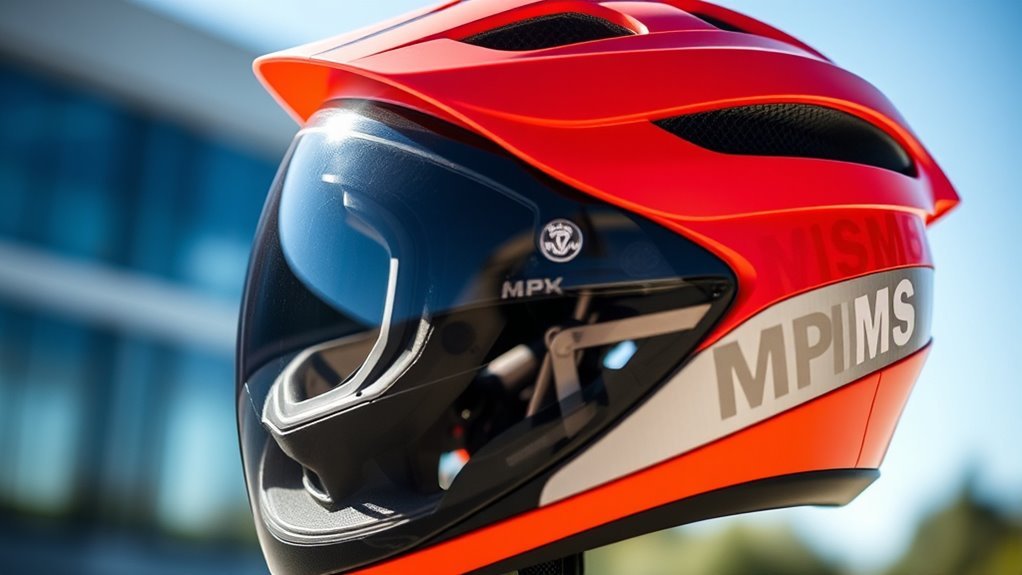
When comparing helmet designs, the advantages of incorporating MIPS technology become evident in various aspects of safety and performance. MIPS benefits extend beyond traditional safety measures, offering enhanced protection against rotational forces during impacts. This innovative design allows for a more dynamic response to crashes, which can greatly reduce the risk of brain injuries.
Consider these advantages:
- Improved injury prevention: MIPS helmets reduce rotational forces.
- Enhanced comfort: The technology allows for better ventilation.
- Versatile applications: Suitable for various sports and activities.
- Peace of mind: Knowing you’re better protected allows for freer movement.
Applications of MIPS in Various Sports
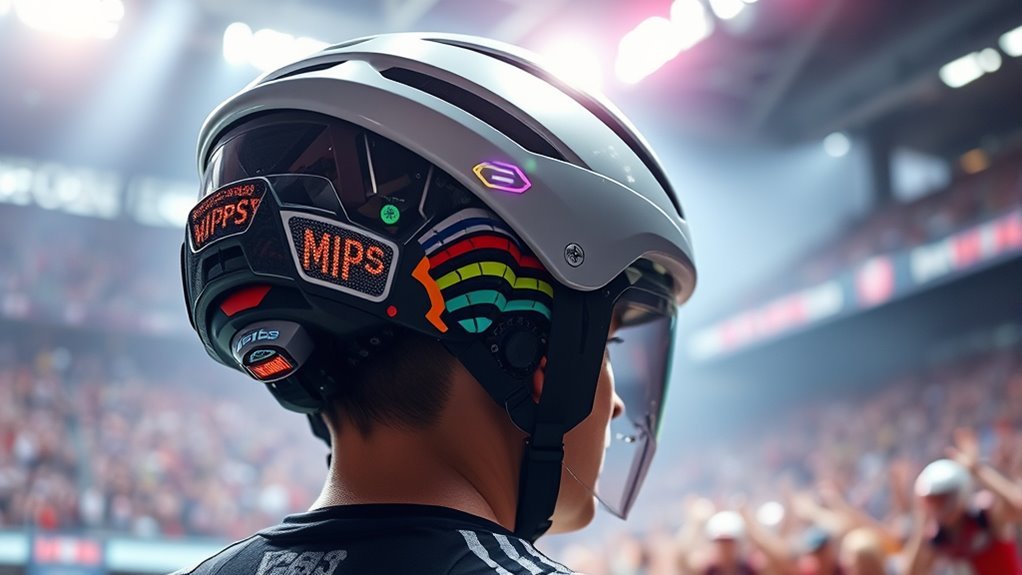
As athletes increasingly prioritize safety, the application of MIPS technology across various sports has gained significant traction. In cycling, MIPS applications are designed to reduce rotational forces during impacts, enhancing head protection. Similarly, in skiing and snowboarding, helmets equipped with MIPS can absorb multi-directional forces, offering greater safety during falls. The MIPS benefits extend to football, where helmets featuring this technology help mitigate the risk of concussions from sudden impacts. Additionally, in equestrian sports, MIPS helmets provide riders with the freedom to perform confidently while knowing they’re protected against rotational impacts. By integrating MIPS technology into sports gear, manufacturers are not only addressing safety concerns but also empowering athletes to push their limits with peace of mind.
Real-World Impact: Case Studies and Research Findings
While many athletes trust MIPS technology for enhanced safety, the real-world impact of this innovation is best illustrated through various case studies and research findings. Real-life examples show how MIPS helmets have notably reduced rotational forces during impacts, leading to effective injury prevention.
Consider these impactful insights:
- A study revealed a 43% reduction in concussion risk among cyclists using MIPS helmets.
- A professional football team documented fewer head injuries after switching to MIPS technology.
- A ski resort reported a decline in serious head injuries linked to MIPS-equipped helmets.
- Testimonials from athletes highlight a newfound confidence in their safety gear.
These findings emphasize how MIPS technology is more than just a trend—it’s a vital step toward safeguarding lives and promoting freedom in sports.
Choosing the Right MIPS Helmet for Your Needs
How can you guarantee you’re selecting the right MIPS helmet for your specific activities and safety needs? Start by evaluating your fit options. A helmet should snugly conform to your head without discomfort; too loose or tight can compromise safety. Next, consider your style preferences. Whether you’re into mountain biking, road cycling, or casual commuting, there’s a MIPS helmet that matches your aesthetic while providing the necessary protection. Additionally, examine the helmet’s ventilation, weight, and additional features like visor compatibility. Look for certifications that confirm its safety standards. Remember, investing in a high-quality MIPS helmet tailored to your activities not only enhances your comfort but also greatly increases your protection on the road or trail. Choose wisely to enjoy freedom with confidence.
Frequently Asked Questions
How Does MIPS Technology Affect Helmet Weight and Comfort?
MIPS design can enhance helmet fit without greatly increasing weight. It incorporates a low-friction layer that allows the helmet to slide upon impact, which can lead to a more comfortable and secure fit. This design helps distribute forces more evenly, potentially reducing the helmet’s bulkiness. You’ll notice that despite the added safety feature, many MIPS helmets maintain a lightweight feel, ensuring you enjoy both protection and comfort while riding or engaging in other activities.
Are MIPS Helmets More Expensive Than Traditional Helmets?
Yes, MIPS helmets are generally more expensive than traditional helmets. When you look at helmet comparisons, you’ll notice that MIPS pricing reflects the advanced technology designed to enhance safety. While they may cost more upfront, investing in a MIPS helmet could provide added protection against rotational forces during impacts. For those who value freedom on the road or trail, the extra cost may be worth the peace of mind that comes with superior safety features.
Can MIPS Technology Be Added to Existing Helmets?
You can’t just slap MIPS technology onto an existing helmet like a band-aid on a cut. MIPS integration requires specific design elements that most helmets lack. Helmet modification isn’t straightforward; it involves the entire structure and materials to effectively reduce rotational forces. If you’re serious about safety, it’s best to invest in a helmet designed with MIPS from the start. This way, you’ll guarantee maximum protection without compromising your freedom to ride safely.
How Long Do MIPS Helmets Typically Last?
MIPS helmets typically last around three to five years, depending on usage and care. Their durability is influenced by factors like exposure to sunlight, temperature changes, and impacts. While MIPS technology enhances protection, it doesn’t extend the helmet’s lifespan considerably. Regularly inspect your helmet for signs of wear or damage, as this can affect its effectiveness. Prioritizing both MIPS technology and overall helmet durability guarantees your safety while enjoying your freedom.
Are There Maintenance Tips for MIPS Helmets?
To maintain your MIPS helmet, use gentle cleaning techniques like soap and water for the outer shell and a damp cloth for the interior. Inspect it regularly, ideally after every ride, checking for cracks or dents. If you notice any damage, it’s best to replace the helmet. Remember, proper care not only extends its lifespan but also guarantees you’re protected when you’re out enjoying your ride.
